It’s important to take a look back at past church statistics to prepare for what’s ahead. Understanding the past evangelical church attendance statistics and more sets you up for the future. More than just watching trends in church attendance, it’s important to understand the culture and well-being of the world we live in. We’ll look at 30 church statistics for 2024 from the past year to help you prepare.
It’s been a few years since Covid 19, and churches are just now starting to recover. Online services remain popular, but in-person church attendance remains steady. While some of the statistics we found below may seem disappointing, we can use this information for our benefit.
If you’re interested in past statistics over the years, take a look at any of these links to see how trends have changed!
Previous Church Statistics
17 Church Statistics for 2023 You Need to Know
18 of the Latest Church Statistics You Should Know in 2022
25 Church Statistics You Need To Know For 2021
14 Church Statistics You Need To Know For 2020
37 Church Statistics You Need To Know for 2019
10 Church Statistics You Need To Know For 2018
Estimated reading time: 13 minutes
Table of contents
- Previous Church Statistics
- 1. Fast Growth for Multi-Campus Churches
- 2. Average Age of Senior Pastors
- 3. Churches are still recovering from pre-pandemic attendance losses
- 4. New locations are in the pipeline
- 5. Americans who claim Christianity may decline
- 6. Reasons People Don’t Attend Church
- 7. Church Online Growth Vs. Decline
- 8. Live streaming your church services can increase tithing by as much as 70%.
- 9. Average Church Size
- 10. Although nearly 50% of people attended church weekly as a child, only 20% attend weekly as adults.
- 11. Social Media Use
- 12. Church Websites Continue to be Vital
- 13. Church Salaries
- 14. U.S. Depression Rates Reach New Highs
- 15. Just 28% of Christians Is Actively Involved in Discipleship Community
- 16. Religion continues to be less important in American life post-COVID 19 Pandemic
- 17. Multisite churches have a span of care of one volunteer leader for every 12 people in attendance.
- 18. Roughly 84% of American churches are plateaued or declining.
- 19. Church Membership
- 20. Regular Church Attendance Statistics
- 21. One in five U.S. adults use apps or websites for scripture reading
- 22. Tithing
- 23. Frequency in tithing
- 24. Online Tithing is Still the Preferred Method
- 25. 30% of all annual church donations in America happen in the month of December.
- 26. Volunteer Numbers are Rising
- 27. Millenial
- 28. Christian Universities Experience All Time Growth
- 29. Clergy Discontent
- 30. Churches Launched
- Summary
1. Fast Growth for Multi-Campus Churches
Churches with more identical campuses have experienced attendance growth of 25% when compared to attendance one year ago. Churches with more autonomous campuses have grown by 13% in the last year. In other words, churches with identical campuses are growing almost twice as fast.
2. Average Age of Senior Pastors
- There are over 29,944 pastors currently employed in the United States.
- 12.9% of all pastors are women, while 87.1% are men.
- The average pastor age is 51 years old.
3. Churches are still recovering from pre-pandemic attendance losses
- On average, churches are at 85% of their pre-pandemic attendance level (Lifeway Research)
- Because of reduced attendance rates, 68% of churches have congregations of fewer than 100 people, including 31% who have fewer than 50 (Lifeway Research)
4. New locations are in the pipeline
One-third of the churches surveyed indicated they anticipate launching another campus in the next 12 months.
5. Americans who claim Christianity may decline
Looking past 2024, Pew Research Center predicts the number of Americans identifying as Christian could fall below 50% over the next few decades. Currently, 64% of Americans identify as Christian. The most recent religious census also showed the number of independent, non-denominational Christian churches growing from 2010 to 2020.
6. Reasons People Don’t Attend Church
9% of people attributed their declining health as the reason, while 18% claimed sermons weren’t engaging enough, and 23% simply couldn’t find a church that was right for them.
7. Church Online Growth Vs. Decline

- 44% of people prefer to engage in prayer from home.
- During the pandemic, 45% of Americans watched at least one Christian church online service.
- 53% of practicing Christians streamed their church’s services online.
- 33% of church attendees first found their church online.
- Although they don’t go to church on a regular basis, 17 million Americans still visit church websites.
- 96% of pastors live-streamed their services during the pandemic.
- 40% of churched adults streamed services from their regular church.
- In just a single year, over $2.2 billion in church donations were given online.
8. Live streaming is a must
Live streaming your church services can increase tithing by as much as 70%. Some churches are growing their regular attendance counts by 50% to 195% or more in some cases by live streaming their services.
9. Average Church Size
There are 177,000 “small churches” that average 60 worshipers per Sunday. They represent 59% of all churches and account for 9 million worshipers in total.
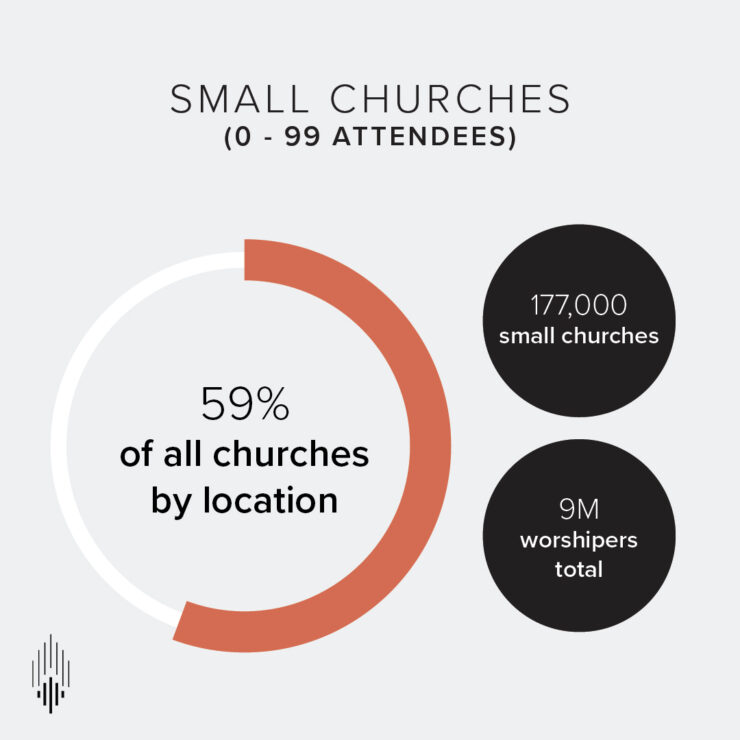
There are about 105,000 “medium-small” churches with 100 to 499 worshipers per week. They represent 35% of churches nationwide and account for 25 million worshipers in total.

Next is “medium-sized churches” with 500 to 999 worshipers. They represent 4% of churches with 8 million attendees nationwide. They have larger numbers of staff and tend towards staff-led volunteer-based programming and ministries.
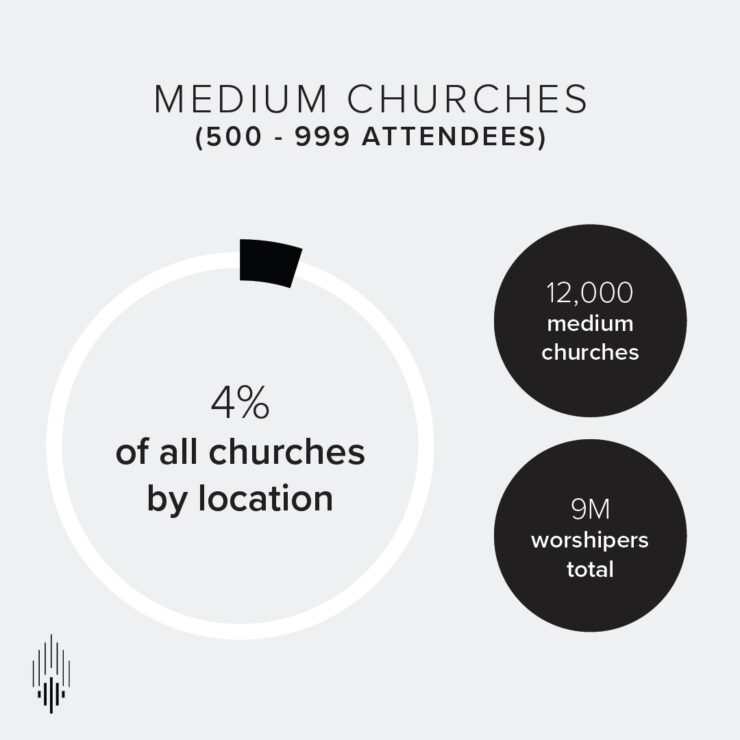
Then there are “large churches” with 1,000 to 1,999 attendees. They represent 2% of churches overall with 9 million attendees. These churches have approximately ten to twenty staff who lead most church programs and oversee volunteers.
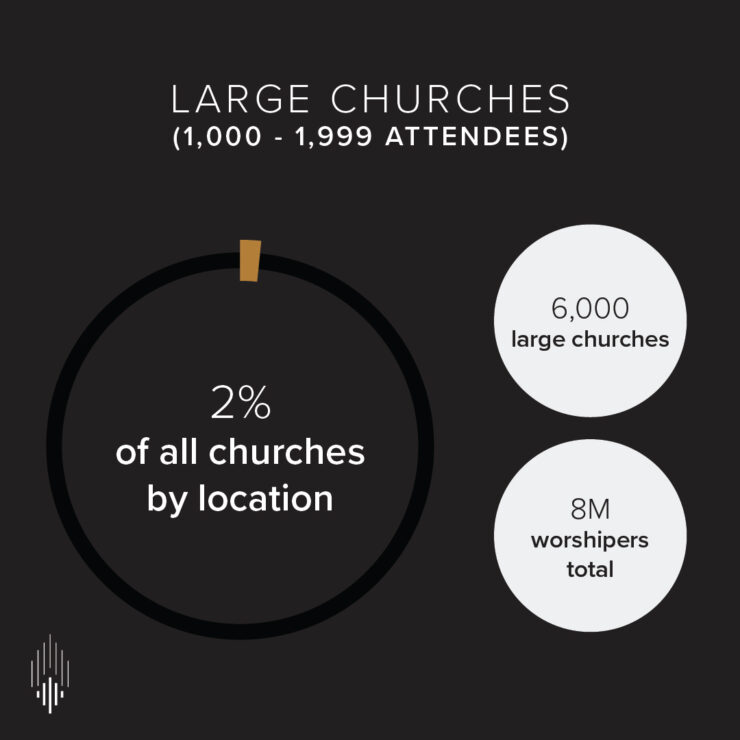
Mega churches have roughly 2,000 to 9,999 attendees. There are 1,170 “mega-churches” making up only 0.5% of the total churches in America, serving 4 million attendees. A “mega-church” can average anywhere from twenty to over one-hundred pastors and paid staff, with multi-million dollar budgets. Programs are primarily staff-led.
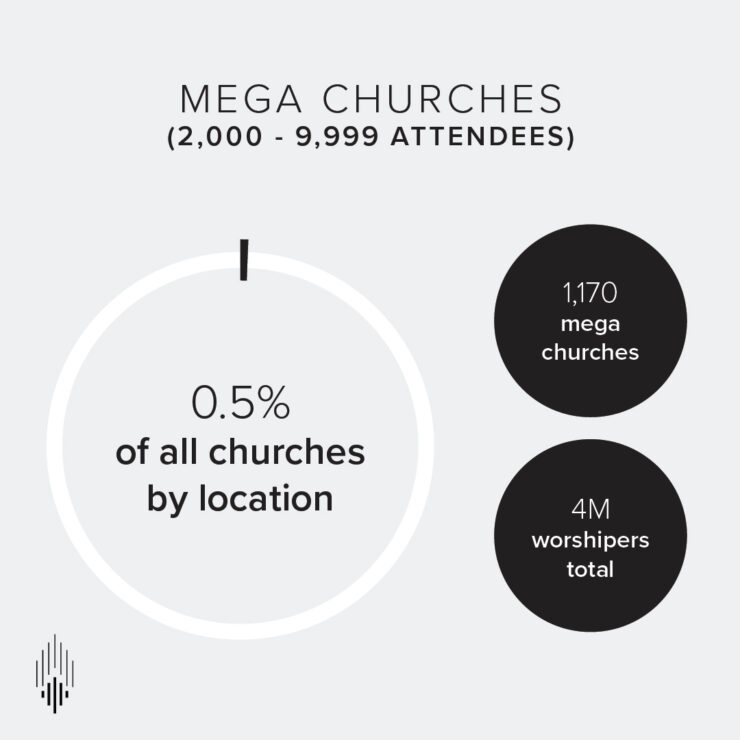
Super-Mega churches have over 10,000 worshipers every Sunday. There are about fifty in the United States, with the largest being Lakewood Church in Houston, Texas (at least they claim to be the biggest). Super-mega-churches make up 0.01% of the total churches, and all combined serve 700,000 weekly worshipers.
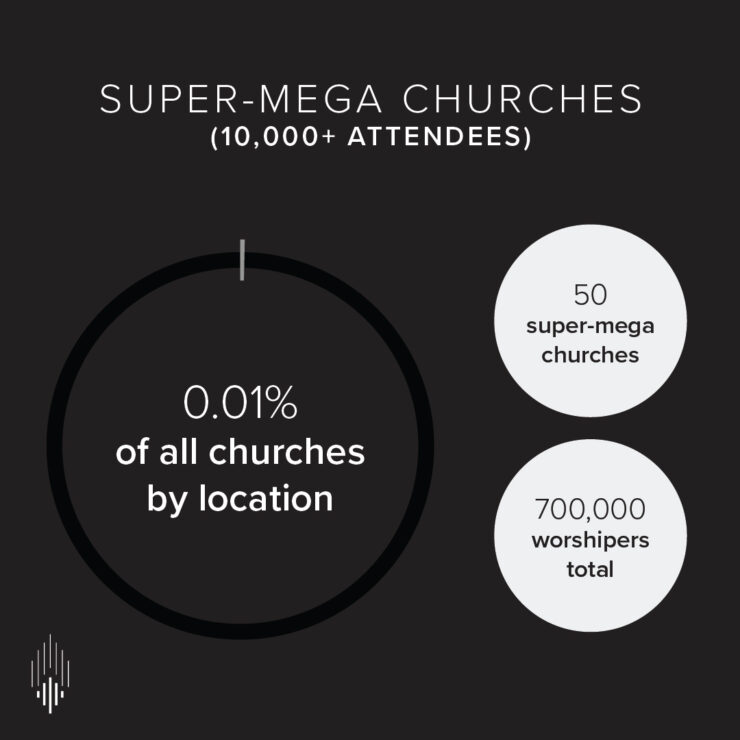
10. Adult vs. Childhood Attendance
Although nearly 50% of people attended church weekly as a child, only 20% attend weekly as adults. This recent data comes from a survey conducted by Gallup, and the change is no surprise given the generational attendance fluctuations churches are experiencing. But it shows a shift in the modern mindset away from the habit of regular church attendance.
11. Social Media Use

As recently as of October 2023, there were 5.3 billion internet users worldwide, which amounted to 65.7 percent of the global population. Of this total, 4.95 billion, or 61.4 percent of the world’s population, were social media users. 85% of churches find their congregations are on Facebook, 15% use Twitter and 15% use Instagram.
Younger generations are more likely to engage with church related posts as they spend a lot of time on social media. It’s important to create posts that are targeted to younger generations to make them feel included and involved.
12. Church Websites Continue to be Vital
Online church statistics all agree on this subject—having an online presence is crucial even for churches. This is especially important in the US—even Americans that don’t go to a house of worship on a regular basis visit church websites. An astounding 17 million of them did so, though if we also include YouTube church services, that number would be even higher.
13. Church Salaries
As of November 26, 2023, the average annual pay for the Church Staff jobs category in Texas is $54,416 a year. Just in case you need a simple salary calculator, that works out to be approximately $26.16 an hour. Zip Recruiter allows you the ability to view any state in the U.S. to see the average church salary, Texas was used as an example.
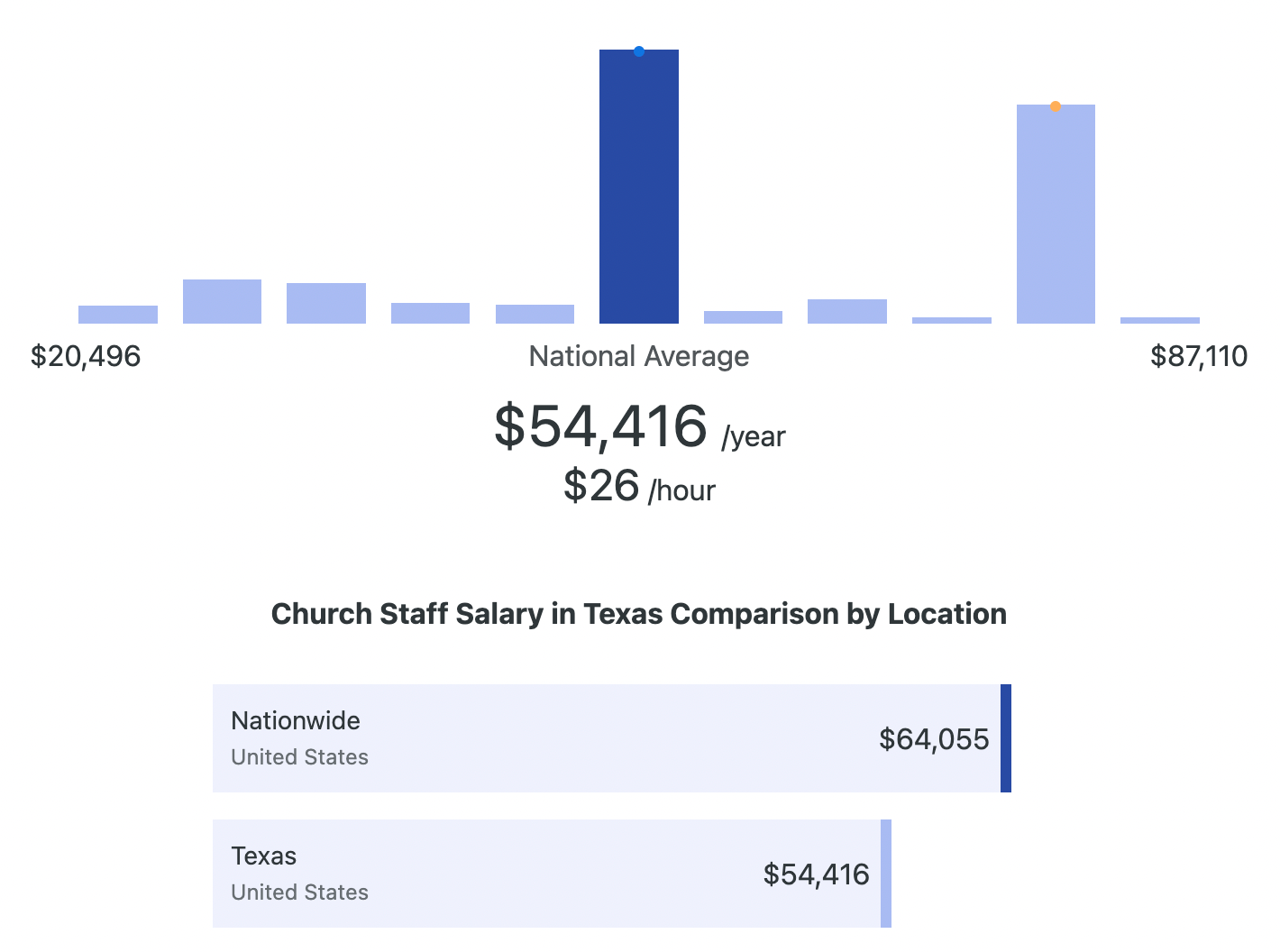
14. U.S. Depression Rates Reach New Highs
The percentage of U.S. adults who report having been diagnosed with depression at some point in their life has reached 29.0%, nearly 10 percentage points higher than in 2015.
Clinical depression had been slowly rising in the U.S. prior to the COVID-19 pandemic but has jumped in its wake. Social isolation, loneliness, fear of infection, psychological exhaustion (particularly among front-line responders such as healthcare workers), elevated substance abuse and disruptions in mental health services have all likely played a role. While
15. Just 28% of Christians Are Actively Involved in Discipleship Community
One in four U.S. Christians (28%) falls into this category. Another 28 percent are being discipled, but are not helping others grow closer to Christ, and a very small percentage (5%) is only discipling others.
16. Religion continues to be less important in American life post-COVID 19 Pandemic
Continuing a trend from the last decade, fewer than 2 in 10 Americans (16%) say religion is the most important thing in their lives, compared to 20% in 2013. Nearly 1 in 3 Americans (29%) say religion is not as important, while in 2013 less than 1 in 5 (19%) said the same. Religious affiliation seems to not be as important in people’s lives as it used to in past generations.
17. Multisite churches and their Volunteers
Multisite churches have a span of care of one volunteer leader for every 12 people in attendance. Leaders include adults and students who are serving in roles where they are responsible for leading a team or a group of other people (e.g., team leaders or group leaders). By comparison, in last quarter’s report, all churches, including primarily single location churches, had one volunteer leader for every 17 people in attendance. It appears multisite churches are empowering more lay leaders.
18. Roughly 84% of American churches are plateaued or declining.
Only 16% of churches in the US are experiencing growth or hyper expansion.
19. Church Membership
A 2021 Gallup poll revealed another stark number for Christians: church membership in the US has fallen below 50% for the first time.
20. Regular Church Attendance Statistics
In total, 43% reported that they generally attend and/or watch religious services at least once a month, or that they attended/watched services in the month prior to the survey. A majority of U.S. adults (57%) said they do not generally attend religious services and did not do so in the past month, either in person or virtually.1
21. One in five U.S. adults use apps or websites for scripture reading
This can go hand in hand with social media use. With the integration of technology in the palm of our hands, people are more likely to read the Bible on their phones as opposed to a physical Bible.
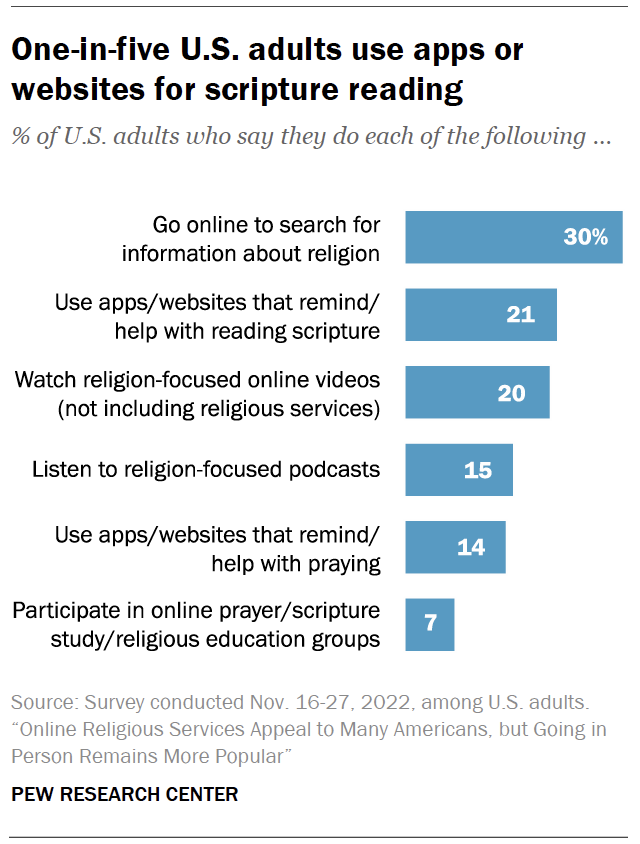
22. Tithing numbers decrease
- The average church giving by adults who attend US Protestant churches is about $17 a week.
- 37% of regular church attendees and Evangelicals don’t give money to church.
- 17% of American families have reduced the amount that they give to their local church.
- 7% of church goers have dropped regular giving by 20% or more.
23. Frequency in tithing
- 5% give weekly
- 14% give monthly
- 81% give yearly or intermittently
24. Online Tithing is Still the Preferred Method
- 60% are willing to give to their church digitally versus in person
25. 30% of all annual church donations in America happen in the month of December.
Usually, people feel the most generous towards the end of the year and this isn’t a new fact. Church growth statistics suggest that almost a third of all US church donations arrive in December. It’s not just during the month, though; it’s particularly at the very end of the year. 10% of all annual donations in the US are made in the last three days of December!
26. Volunteer Numbers are Rising
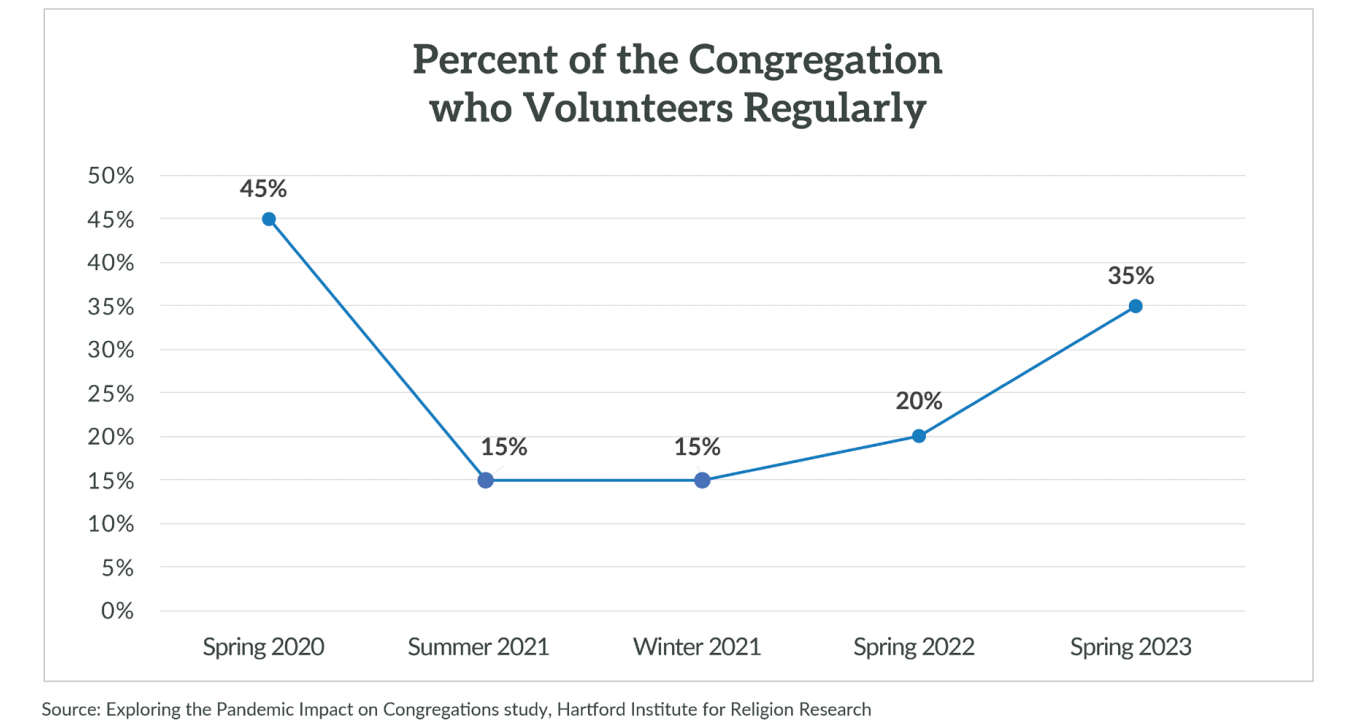
27. Millennials’s Attendance Increases
39% of Millennials report attending church on a weekly basis, according to Barna’s recent State of the Church report. This is a significant increase over years prior and places them at a much higher rate of attendance than Generation X and even the Boomer generation, which had previously been more faithfully in attendance than their younger counterparts.
- 39% of Millennials report attending church weekly, up from 21% in 2019 (Barna)
- 40% of Millennials are religiously unaffiliated (Pew Research Center)
28. Christian Universities Experience All Time Growth
Eleven evangelical college and universities have announced record enrollment this fall—which actually is a record for breaking records, as far as anyone in Christian higher education is concerned. College presidents and vice presidents who spoke to CT say prospective students are drawn to the community at small Christian schools. Past classes suffered through the social isolation imposed on them through the pandemic in high school and now are looking for deep connections in college.
29. Clergy Discontent
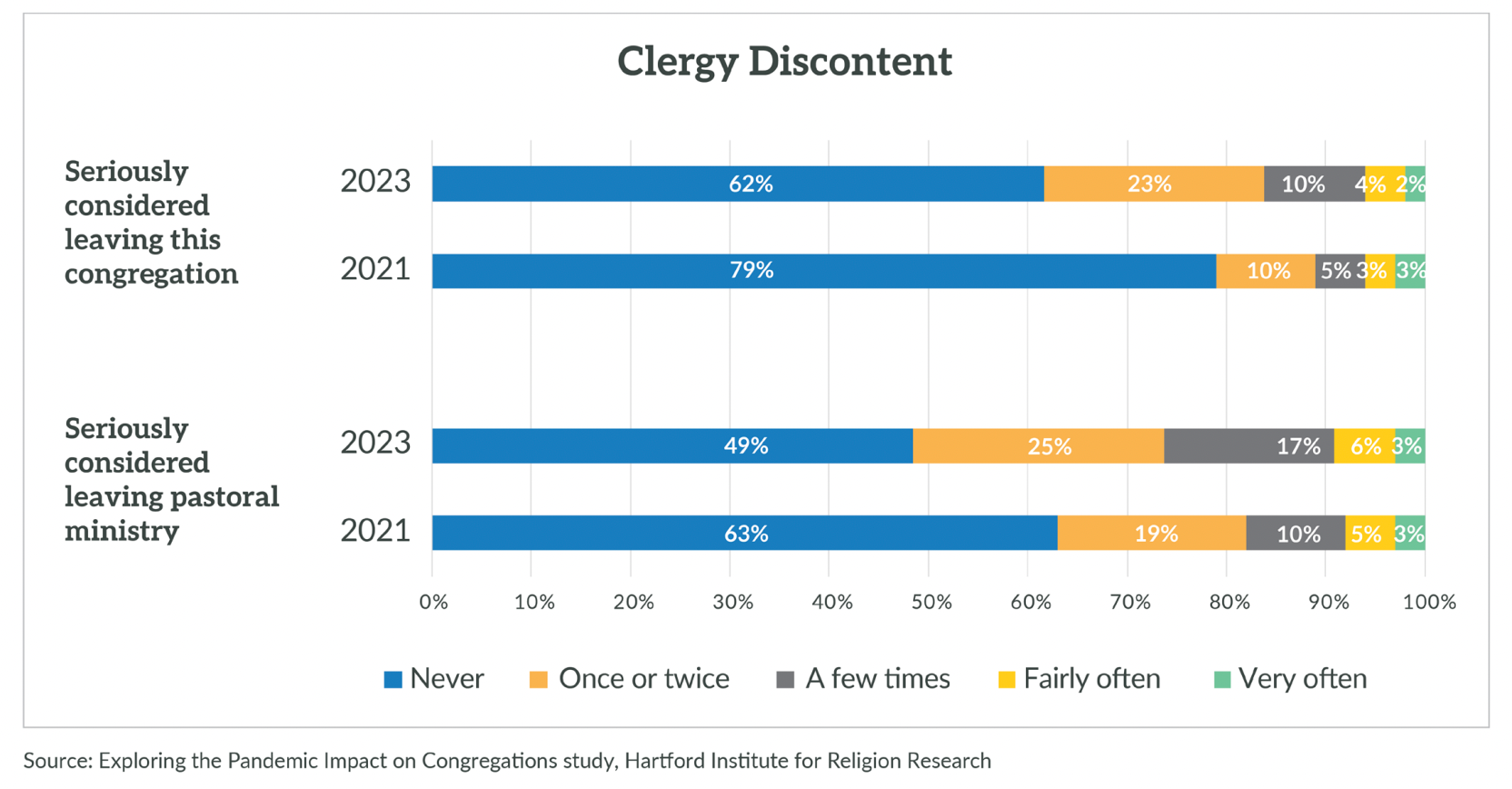
An in-depth look at who is most likely to think about quitting the pastoral ministry shows it is more likely clergy with any of the following traits: younger, female, part-time, bi-vocational, more recently hired, and those who see a poor fit between themselves and the membership. Ministers in more challenging circumstances are also more prone to consider quitting. Those clergy in congregations that are financially challenged, less willing to change, have a negative outlook on the future, and have higher conflict are more likely to consider leaving the ministry.
The fact that over 50% of clergy have thought at least once or twice about leaving indicates that many are carrying some level of stress and exhaustion, but even with this finding there are some mixed messages regarding pastoral resilience within the survey. Only 15% have doubted a few times or more Back to Normal?
30. Churches Launched
ARC is a cooperative of independent churches from different denominations, networks, and backgrounds who strategically resource church planters and pastors to help them reach people with the message of Jesus. They urge existing churches to remain steadfast and new churches to breathe life into their cities and become a beacon of hope to the hurting.
As of December 2022, they have witnessed 1,057 churches launch in communities across the globe. God is still moving, and the local Church is stronger than ever! This is just the statistics for ARC churches and does not include churches launched that are not part of that organization so the numbers may be higher.
Church Trends 2024
Church members and church leaders can remain hopeful while looking at these statistics from the past year. While things are quite back to normal before the pandemic, church attendance is rising steadily. It’s important to keep the faith and not be discouraged in a world that is fast changing. So often the people shouting the loudest may be delivering nothing but bad news.
“Therefore, my beloved brethren, be steadfast, immovable, always abounding in the work of the Lord, knowing that your labor is not in vain in the Lord.” – 1 Corinthians 15:58
Bible Gateway

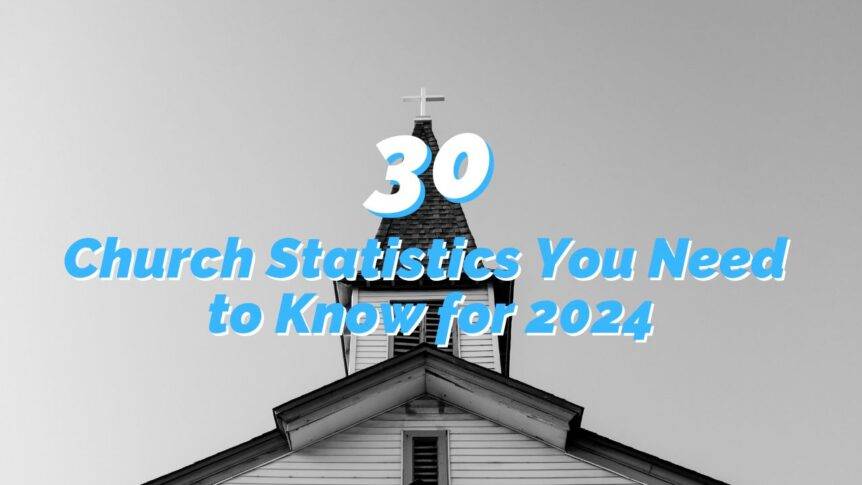



Comments 2
This is a great article with wonderful data on the state of organized religion, demographics and trends! If possible, I’d like Emma Davis to contact this former Dallas resident of 21 years. I have many questions. Thanks!
It is essential that the church returns to the concept of Christ as the head of the church and the absolute authority and doctrines of the Bible in faith and practice. The temptation is to cave to modern notions based on feelings and a desire to fit in. We cannot vote out the standards of God and His authority.